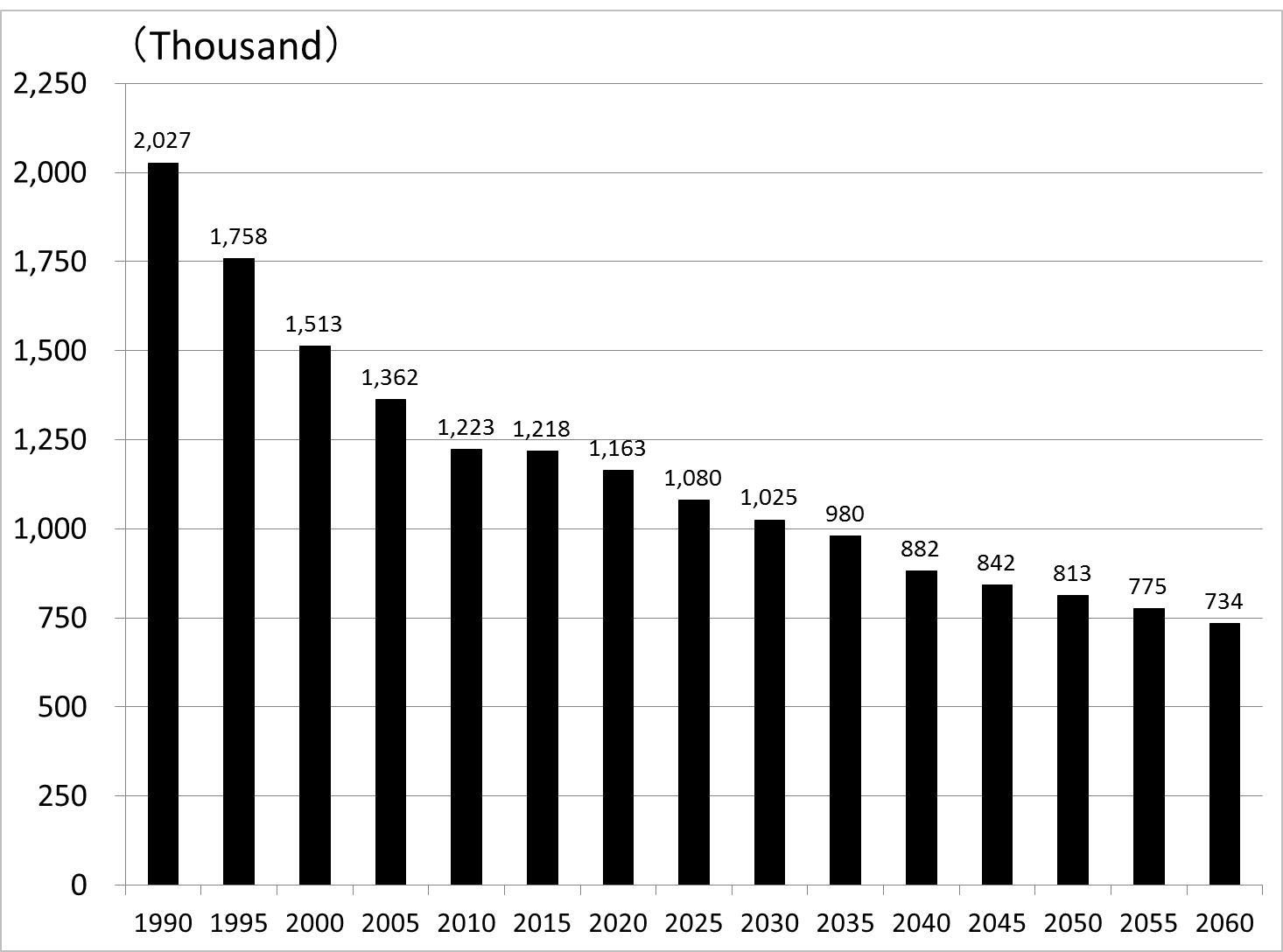Column Finance and the Social Security System 2018.01.22
【Aging, safety net and fiscal crisis in Japan】No.11: Universities Facing a Sharp Decline in the 18-year-old Population
On January 4, 2018, stock prices in Japan rose to their highest since 1992, perhaps indicating a sound economy. However, structural reforms to overcome the recent financial crisis have been postponed. One component of Japan's financial crisis concerns university enrollment.
As shown in Figure 1, the number of 18-year olds enrolling in universities has declined from 2,027,000 in 1990 to 1,218,000 in 2015, or 40%. Nevertheless, the number of universities has increased from 507 in 1990 to 777 in 2016, or over 50% (Table 1). Private universities make up the majority of the increase. Yet, the 18-year-old population is expected to fall to 734,000 by 2060. Therefore, it is expected that many private universities will not survive.
There are 86 national universities in the 47 prefectures, with at least one national university in each prefecture in addition to the prefectures'/cities' established universities. At these universities, the affiliated hospitals greatly influence the overall financial balance. Therefore, if an affiliated hospital becomes deficit, it will threaten the survival of the university.
In 2007, 7,625 students entered medical school; this grew to 9,420 in 2017. Because it is projected that the 18-year-old population will be less than 1 million by 2035, Japan appears to be on track for a society in which 1 in 100 will become a medical doctor.


Source: Ministry of Education, Culture, Sports, Science, and Technology
